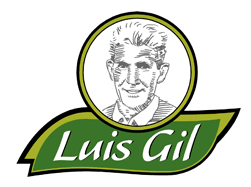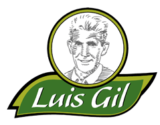We start from the premise that in Spain all livestock farms are subject to strict health controls throughout the food production and distribution chain that guarantee minimum quality of the meat that reaches the market.
But on the other hand, no one doubts that there are important differences in the meat we buy associated with the livestock model and the way the animals live. We tell you in this post what the main differences are.
The first thing we are going to make clear is the difference between the different models:
Intensive livestock farming: It is a mode of production that seeks to make farms as profitable as possible. The animals normally live and are fed in industrial warehouses without access to patios or pastures. They are facilities that make the investment in infrastructure as profitable as possible by optimizing the number of cattle and relying on technology that allows monitoring and reducing management as much as possible to improve costs and maximize profitability.
Extense livestock farming: They are usually smaller family farms, although there are also large models, where instead of artificial resources, natural resources and labor are used more for raising livestock. Thus the animals have more space, they feed on feed but they also take advantage of the natural pastures and enjoy a life partially outdoors. There are no state regulations that identify or regulate this type of farm, although there are in some communities, so the conditions for raising animals are established by the different farms and there can be great variations from one model to another.
Organic livestock: It is a livestock and production model strictly regulated by European regulations that farms must comply with to obtain the identification seal on their products. In fact, they are subjected to periodic inspections to obtain the certification that guarantees this production model to consumers. Among the aspects regulated in the regulations are:
- animal welfare
- the minimum animal density per square meter
- feeding strictly from organic pastures and feed
- the prohibition of substances that stimulate the growth of animals
- the activity must be linked to the soil and the environment
- priority of preserving the fertility of the land through optimal use of resources
- maximum reduction of emissions
- ensure biodiversity and the maintenance of ecosystems
- use of well-adapted native breeds
- balance between the livestock load and the supply of food resources on the farm
- avoid the use of fertilizers, chemicals, herbicides and pesticides
- minimize water and land pollution
With all of the above clear, let's now see what advantages our livestock farming model offers in the meat that we offer to consumers.
Duroc Pigs
There is no doubt that there are some breeds of animals that are more appreciated than others in terms of the quality of the meat they produce. This is clearly seen in pig livestock, in which breeds well adapted to the ecosystem such as the Iberian or the Duroc breed of our piglets, are meats that are highly appreciated for their organoleptic qualities than the white pig breeds, more used in industrial livestock farming.
Our Duroc pigs are rustic animals, which infiltrate fat very well and have a great meat quality that is favored by the type of breeding.
Free-range animals
Our piglets are raised freely, in natural conditions, outdoors, and without stress. They have food and water as they please. They are happy little pigs that live a full life enjoying the environment and coexistence in 'El Encinar' de Ocon in the Biosphere Reserve.
The exercise they do walking through 'El Encinar' and this way of life favor slow and slow growth, favoring excellent organoleptic qualities in the meat, with a lot of infiltrated fat, very aromatic and with a great flavor.
Organic and antibiotic-free food
Meat from animals fed with natural resources, in addition to grain, has highly appreciated aromatic and flavor qualities. Our piglets have access throughout their lives to natural pastures and also to acorns during the montanera season (from October to December), which gives their meat unique nuances and aromas.
Both the grasses and the feed with which they are raised come from organic farming, and are free of antibiotics, phytosanitary products and genetically modified organisms, as required by organic regulations, so the consumer has the guarantee of consuming completely meat. natural and healthy.



